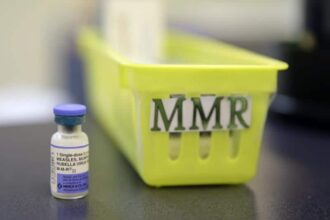A groundbreaking virtual cardiac rehabilitation program has launched across rural British Columbia, offering a lifeline to heart patients who have long faced geographic barriers to essential recovery services. The initiative, spearheaded by researchers at the University of British Columbia, aims to transform cardiac care delivery in remote communities where accessing specialized health services often requires hours of travel.
“We’ve known for decades that cardiac rehabilitation saves lives, yet only about 20 to 30 percent of eligible patients in Canada ever receive it,” explains Dr. Miranda Fong, the project’s lead researcher. “That percentage drops even lower in rural areas where transportation challenges and distance from medical centers create significant obstacles.”
The virtual program, which began enrolling patients this spring, provides comprehensive rehabilitation services through a combination of video consultations, remote monitoring technology, and personalized exercise regimens that patients can complete at home. Participants receive tailored guidance from cardiologists, exercise physiologists, and nutritionists—all without leaving their communities.
For rural British Columbians like James Whitaker, a 67-year-old heart attack survivor from the Kootenay region, the program represents a transformative approach to recovery.
“After my heart attack, I was told I needed rehab, but the nearest center was a three-hour drive away,” Whitaker told CO24 News. “With my wife unable to drive those distances and no reliable public transportation, I simply couldn’t access the care I needed. This virtual program has changed everything.”
The initiative addresses a critical healthcare disparity in Canada, where rural residents consistently report poorer health outcomes than their urban counterparts. According to Statistics Canada, rural Canadians are 23% more likely to die from heart disease than those living in metropolitan areas, a gap partly attributed to limited access to specialized care services.
Dr. Saul Isserow, a cardiologist affiliated with the program, emphasizes that virtual rehabilitation isn’t simply a pandemic-era adaptation but potentially a permanent improvement to rural healthcare delivery.
“The evidence supporting cardiac rehabilitation is overwhelming—it reduces mortality by approximately 25 percent and decreases hospital readmissions by up to 18 percent,” Dr. Isserow notes. “By removing geographic barriers, we’re not just offering convenience; we’re potentially saving lives.”
The program incorporates sophisticated wearable technology that transmits real-time health data to clinical teams, allowing for continuous monitoring and immediate intervention if concerning patterns emerge. Participants also engage in weekly group support sessions, addressing the psychological aspects of recovery that often go untreated.
Initial data from the program’s first three months shows promising results, with participant adherence rates exceeding 85%—significantly higher than traditional in-person rehabilitation programs. More impressively, patients report improvements in cardiovascular fitness comparable to those achieved in hospital-based settings.
Provincial health authorities are closely monitoring the initiative as a potential model for addressing other healthcare disparities across rural British Columbia. If successful, the program could be expanded to include rehabilitation services for other chronic conditions such as pulmonary disease and diabetes.
“This represents a fundamental shift in how we think about healthcare equity,” says Health Minister Adrian Dix. “Technology isn’t just making care more convenient—it’s democratizing access to life-saving services that were previously unavailable to many British Columbians.”
As healthcare systems worldwide grapple with resource constraints and growing demands, could virtual rehabilitation programs like this one represent the future of sustainable, equitable healthcare delivery? For rural communities across Canada, the answer may determine not just quality of life, but life itself.










